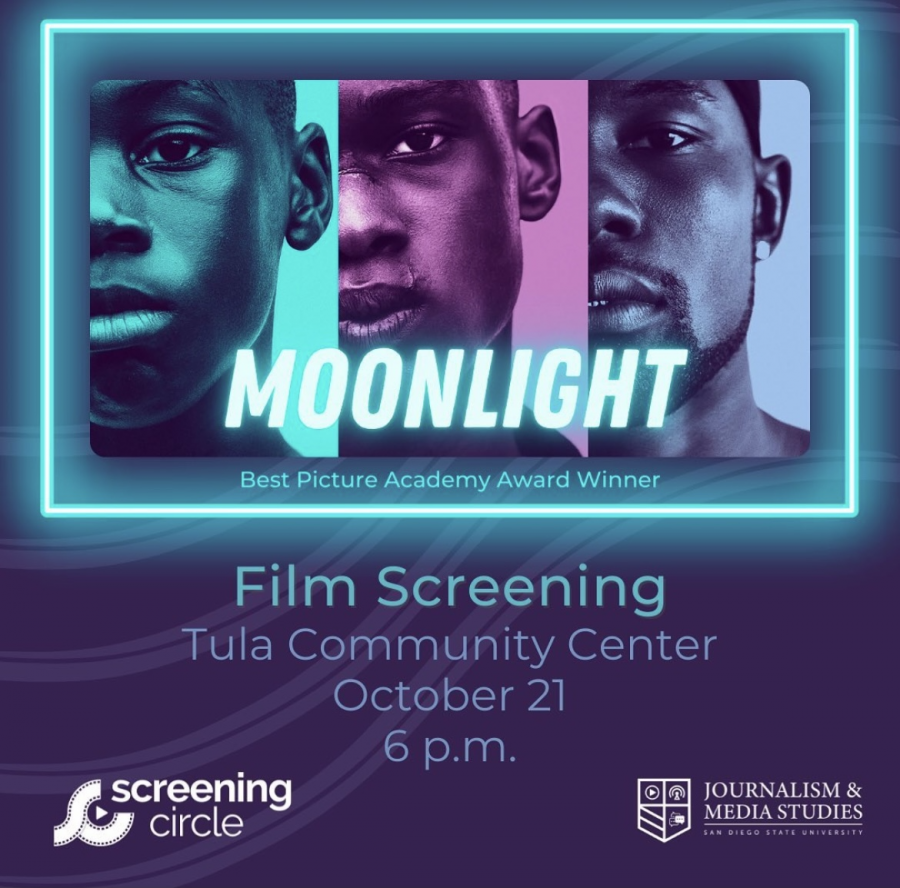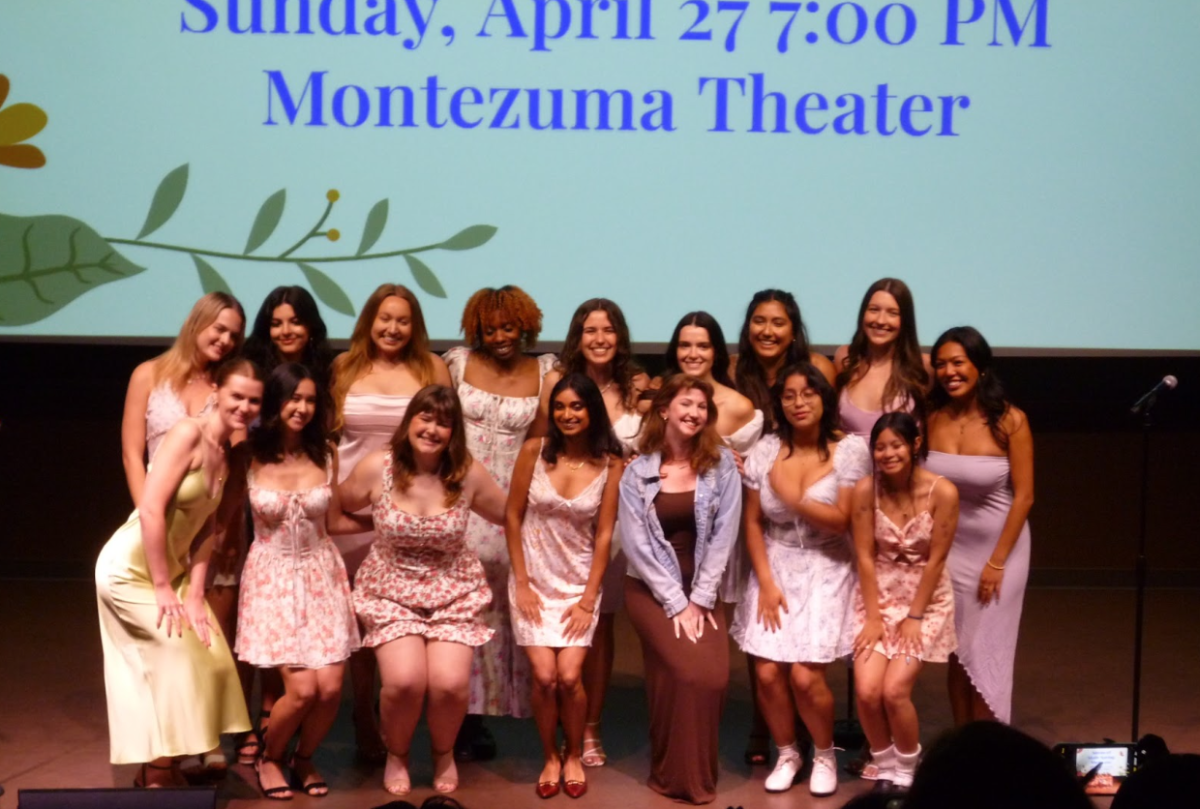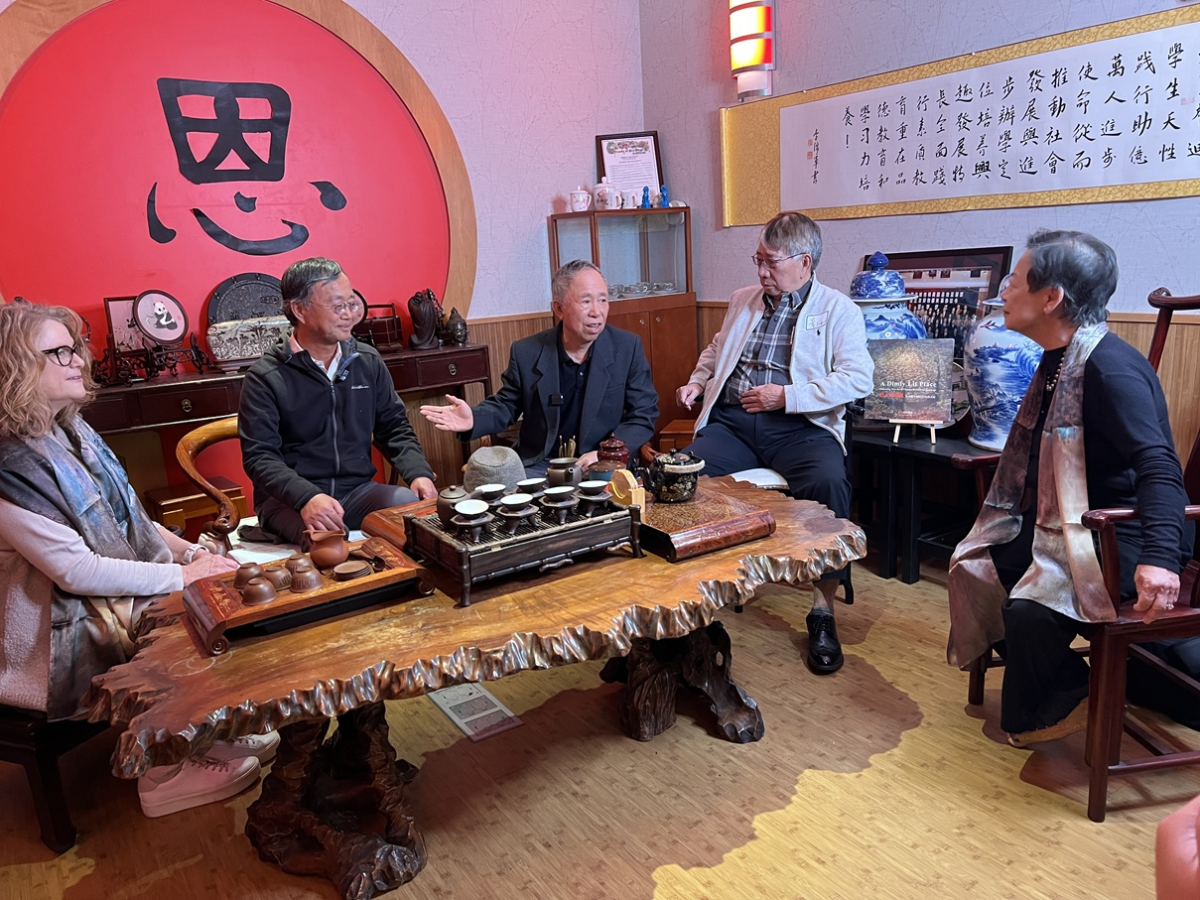On Oct. 21, the School of Journalism and Media Studies hosted a screening of Barry Jenkins’ Oscar-winning film “Moonlight” at the Tula Community Center to a flock of eager students.
The screening was courtesy of the department’s Screening Circle; dedicated to “amplify(ing) voices of traditionally marginalized communities” and “(to) encourage participants to engage in respectful and thought-provoking conversations about race, class, sexuality, and social issues.”
“Moonlight” follows Chiron, a gay black man living in Miami, throughout his adolescence (Alex Hibbert and Ashton Sanders) and into his adulthood (Trevante Rhodes). As he spends his life searching for his truth, he’ll soon discover just how close it truly is.
Upon release, “Moonlight” made waves; it helped to further establish the studio A24 as an artistic juggernaut and (much more importantly) broke ground as the first film with an all-Black cast to score Best Picture at the Oscars; as well as Best Adapted Screenplay for Barry Jenkins and Best Supporting Actor for Mahershala Ali (the first Muslim to do so).
Professional accolades do wonders of course; but what truly bolsters “Moonlight”’s legacy is its empathy and its unwavering commitment to intersectionality (a.k.a. the representation of multiple groups and facets of life).
“This is the second time that we’re doing it (Screening Circle) and we wanted to pick something that was representative of traditionally underserved identities that we hardly see,” Dr. Nathian Rodriguez, Associate Professor for Digital Media said.
Rodriguez also created the film screening’s Adobe Spark page.
The page details the many themes/topics addressed and interpreted in “Moonlight;” including toxic masculinity and quare theory (queer theory through an intersectional perspective).
Last year for their first screening, they did “Lovecraft Country”, which touched on issues of race, ethnicity and sexuality. For this year, they decided to showcase something with intersectional representation, Rodriguez said.
“Dr. (Temple) Northrup and I kind of sat down and started talking and we had a list of different shows and movies and we centered on this one (“Moonlight”) because it really talks a lot about different identities and is intersectional,” Rodriguez said.
Both of them saw “Moonlight” as “the perfect movie to tackle all these different ‘-isms’ that we see present in today’s sociopolitical environment: homophobia, effemiphobia, racism, even classism.”
“Moonlight” gives us a fully realized and intimate vision of a Black man’s self-evolution and self-acceptance of his LGBTQ+ identity; and it’s big Oscar wins presented a potential sea change in Hollywood. So how can theatergoers and the world at large continue to demand and promote intersectional representation when the entertainment industry can’t (or won’t)?
Journalism freshman Katerina Portela said people should watch films that will broaden their worldview.
“People should make more of an effort to look at more diverse movies…especially now (because) there’s a lot more focus on global movies…I think that’s a really good way to get a sense of seeing different perspectives,” Portela said.
Mass communication and media studies graduate student Pedro Caballero said he wants to see more representation of marginalized communities in film.
“I think in terms of if you’ve got any event, if you’ve got film showings, if you’ve got whatever, being able to include those voices into the decision-making process or just the planning process, or just the process in general, you’re gonna get a better product for it,” Caballero said.“So, like this movie, I’m sure it is like the accumulation of a lot of people’s experiences put together into a script.”
For more information about “Moonlight” and its themes, visit Screening Circle’s Spark page for additional information and resources. The film is available to stream on Hulu (with a Starz subscription) and Sling TV and is available to rent on Amazon Prime, Apple TV and Google Play.







